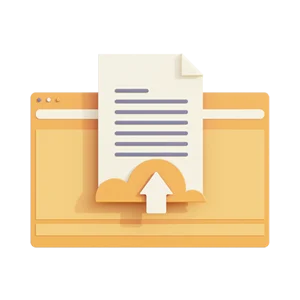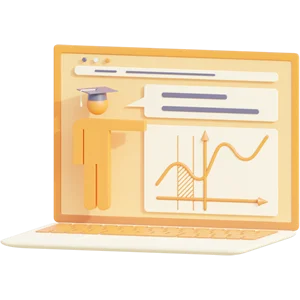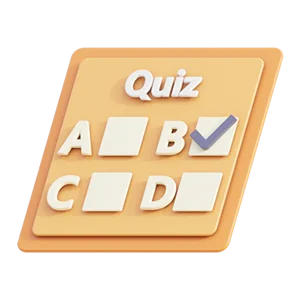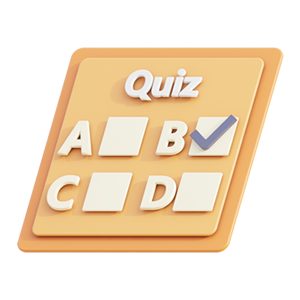NURS 251 Module 1 pharmacology Study Guide 2024 Graded A
1.1 : An Introduction to Pharmacology Concepts
Watch Module 1.1 Video 1
Pharmacology is the study or science of drugs. What is a drug?
A drug is any chemical that affects the physiologic processes of a living organism. Commonly, the term drug refers to any medication that is used for diagnosing, curing, or treating disease.
Drug Effects
Drugs have many different effects on the body including the following:
(1) therapeutic effects,
(2) side effects,
(3) adverse effects and
(4) toxic effects.
1. Therapeutic effect is the desired drug effect to alleviate some condition or symptom.
2. Side effects are the drug effect other than the therapeutic effect that are usually undesirable but not harmful.
3. Adverse effect is a general term for undesirable and potentially harmful drug effects.
4. Toxic effects are undesirable drug effects that implies the drug is poisoning the body and can be harmful or even life-threatening.
Drug Effects USING DIABETES AS AN EXAMPLE
Drugs have many different effects on the body including the following:
(1) therapeutic effects the desired effect
e.g., effect: lowers the patient’s blood sugar
(2) side effects undesirable but not necessarily harmful (not harmful) e.g., effect: some diabetes medication can cause nausea (can be treated)
(3) adverse effects undesirable and potentially harmful
e.g., effect: medication that can be harmful / damaging to the liver
- this type of medication intake must be monitored.
(4) toxic effects undesirable & harmful / life threatening
e.g., effect: e.g., chemotherapy, has a lot of adverse effects; monitored to make sure that it won’t be too toxic. If it gets too toxic / harmful, treatment may have to be suspended.
- must be heavily monitored
Clinically, it is important to recognize the difference between these different ways drugs can affect the body. A simple side effect could be something as harmless as mild nausea after taking a medication that can be managed by taking it with food. The drug therapy can continue without a problem. However, adverse effects need to be assessed to determine whether there is any risk of harm. Drug therapy is often a risk vs. benefit assessment. The patient’s provider should weigh the risk of taking the medication vs. the benefit. It often comes down to the severity of the disease being treated to decide the number of adverse events that will be tolerated. A good example of this is chemotherapy treatments for cancer. There are often adverse events associated with these treatment regimens, yet the treatment is continued because the benefit of treating the cancer is greater than the adverse events the patient experiences. However, there are certainly times when a treatment becomes too toxic, and the patient is unable to tolerate the regimen. This is often a large part of managing a cancer patient’s treatment, to assess how they are handling the adverse effects associated with the treatment regimen and determine whether it is becoming too toxic and needs to be suspended.
Basic Concept
There are some basic concepts that are important to understand and that can be applied to any drug. Most important is the drug’s mechanism of action—how a drug produces its effects. This course will cover the accepted mechanism of action of known drugs.
When a drug enters the body, it has a targeted site of action—the location within the body where a drug exerts its therapeutic effect, often a specific drug receptor.
Generally, these sites of action or receptors are on the surface or inside a cell.
Receptors are specific cellular structures that a drug binds to in order to produce a physiologic effect. When a drug binds to a receptor, it can act either as an agonist, works to activate a physiologic response or drug effect, or an antagonist, works to interfere with other drugs or substances from producing a drug-effect.
Basic concepts
Mechanism of Action It is how the drug produces its effect within the body. When we discuss about the therapeutics, we will go through the course of actions of all the drugs we go over when they are known. There are a lot of drugs that we still don’t exactly know how they produce their effects.
Site of Action Where, within the body the drug actually exerts its
effect. In many cases, it’s called a receptor.
Receptors the location where site of action is.
Receptors are often either on the surface of a cell or inside a cell that drug is going to bind to the receptor and exert its effect.
Two different ways drugs can exert its effect on receptors: Either as an agonist or an antagonist.
Going back to that diabetes example:
If the drug is agonist,
Agonist the drug is going to bind to the receptor and then cause physiological response to happen.
Diabetes example: So if the receptor generally releases insulin, if the drug is acting as an agonist; it’s going to bind to that receptor and cause the receptor to release insulin, hence, lowering the blood sugar in the patient.
If the drug is antagonist,
Antagonist the drug is going to bind to the receptor and prevent / oppose a certain action / physiological response (blocks it).
Diabetes example: the drug is going to bind to the receptor and prevent the release of insulin.
Or a better example would be preventing the release of sugar, if we’re
trying to lower blood sugar in a diabetes patient.
Summary
An agonist is a drug that binds to the receptor, producing a similar response to the intended chemical and receptor. Whereas an antagonist is a drug that binds to the receptor either on the primary site, or on another site, which all together stops the receptor from producing a response. https://lx.uts.edu.au/pharmacology/article/agonists-and-antagonists/
Preview document (3 of 42 pages)
Knoowy benefits
$ 15,75
 Money back guarantee
Money back guarantee
 Documents can be downloaded immediately
Documents can be downloaded immediately
 $0.50 discount when paying with balance
$0.50 discount when paying with balance
-
 Receive free quiz questions with document
Receive free quiz questions with document

Specifications
- School: Chamberlain College Of Nursing
- Course: NURSING
- Subject: pharmacology
- All documents for this course ›
- Course code: NURS 251
Document
- Section: Summaries
- Made on: 01-16-2024
- Type: .pdf
- Pages: 42
- Language: English
Seller
My aim as a Tutor it's to give the best so as the students can attain good grades.
To get exams such as summaries ,
NURSING EXAMS AND TEST BANKS. Contact us, to fetch it for you in minutes if we do not have it in this shop .BUY WITHOUT DOUBT!!!!Always leave a review after purchasing any document so as to make sure our customers are 100% satisfied.
Earn from your summaries?
Subjects of NURSING - Chamberlain College Of Nursing
More NURSING ›ati ati comprehensive predictor ati fundamentals proctored ati nutrition ati pharmacology ati rn comprehensive predictor comprehensive fundamentals health care health care / nursing health care/ nursing hesi hesi rn exit maternal newborn med surg medical nursing medical surgical mental health nurs nursing nursing & health pediatrics pharmacology test bank tncc
 Deal: get 10% off when you purchase 3 or more items!
Deal: get 10% off when you purchase 3 or more items!
Deal: get 10% off when you purchase 3 or more items!








